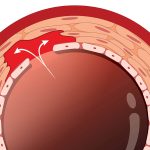- What is an abscess?
- An abscess is a collection of pus surrounded by a wall of tissue. It causes a painful lump and can make you feel unwell.
- An abscess happens when your body tries to control infection by forming a wall around an infected area. Pus forms within this wall. As the amount of pus increases, the lump grows and causes pain. You can get an abscess anywhere in your body.

What are the benefits of surgery?
You should no longer have the abscess and should be free of pain. Surgery should prevent the serious complications that an abscess can cause.
Are there any alternatives to surgery?
If an abscess is small, antibiotics may work but will not be effective in most cases. Sometimes draining the pus with a needle can help but the pus may come back.
What does the operation involve?
A small abscess can be drained under a local anaesthetic but most need a general anaesthetic. The operation usually takes 10 to 20 minutes.
Your surgeon will make a cut on your skin over the abscess. This allows the pus to drain out.
Once the pus has been removed, the cavity needs to heal upwards from the inside out, so the opening in your skin is left open.
If the cavity is deep, your surgeon will place a pack (antiseptic dressing) in it to keep it open, allowing pus to drain out and your wound to heal properly.
What complications can happen?
Some complications can be serious and can even cause death.
General complications of any operation
- bleeding
- allergic reaction to the equipment, materials or medication
- blood clot in your leg
- blood clot in your lung
- chest infection
Specific complications of this operation
- the abscess keeps coming back
- slow healing, if your wound was packed
Consequences of this procedure
- pain
- unsightly scarring of your skin
How soon will I recover?
You should be able to go home the same day or the day after.
Your doctor will tell you when you can return to work.
Most people make a full recovery and can return to normal activities.



